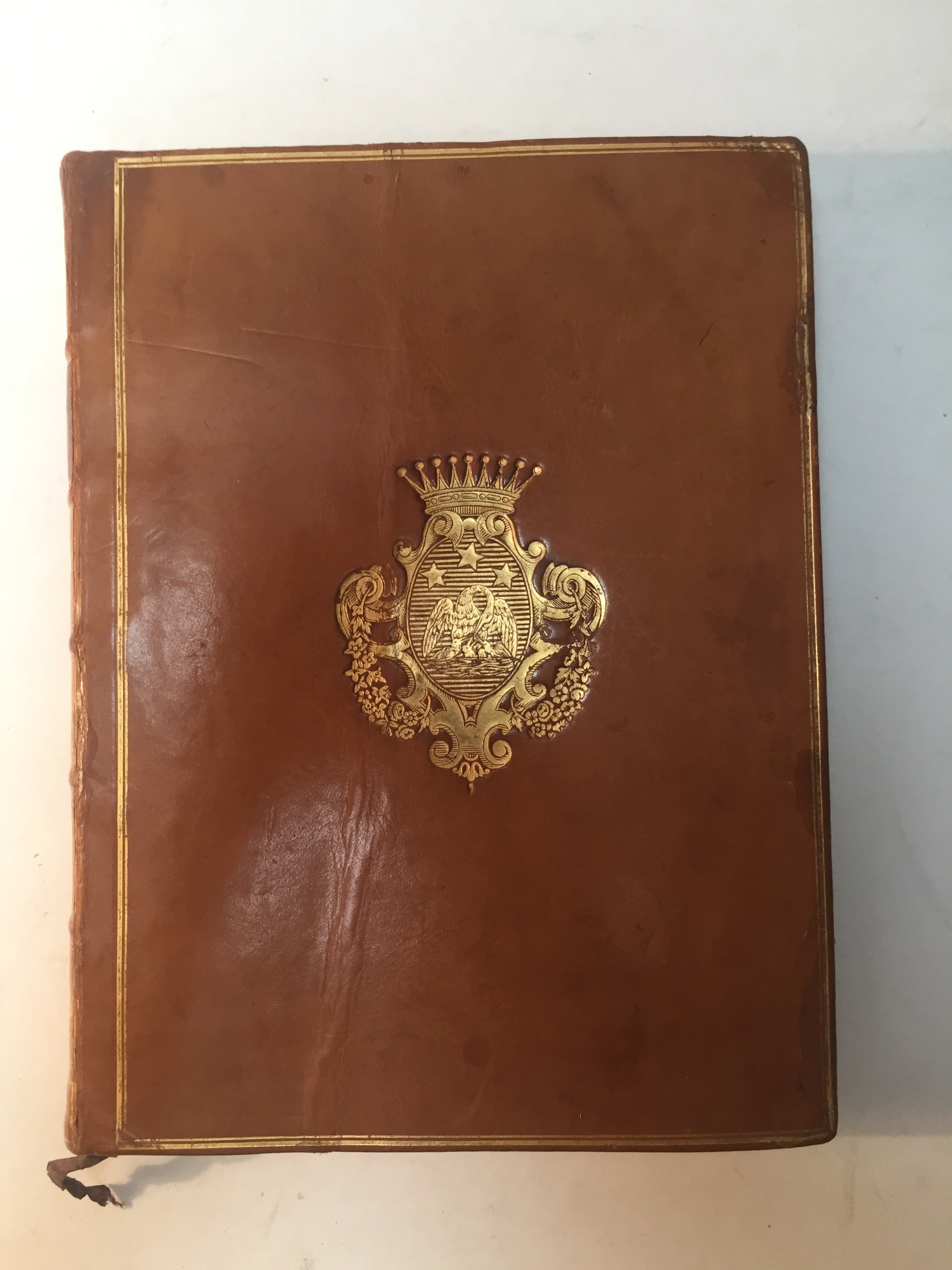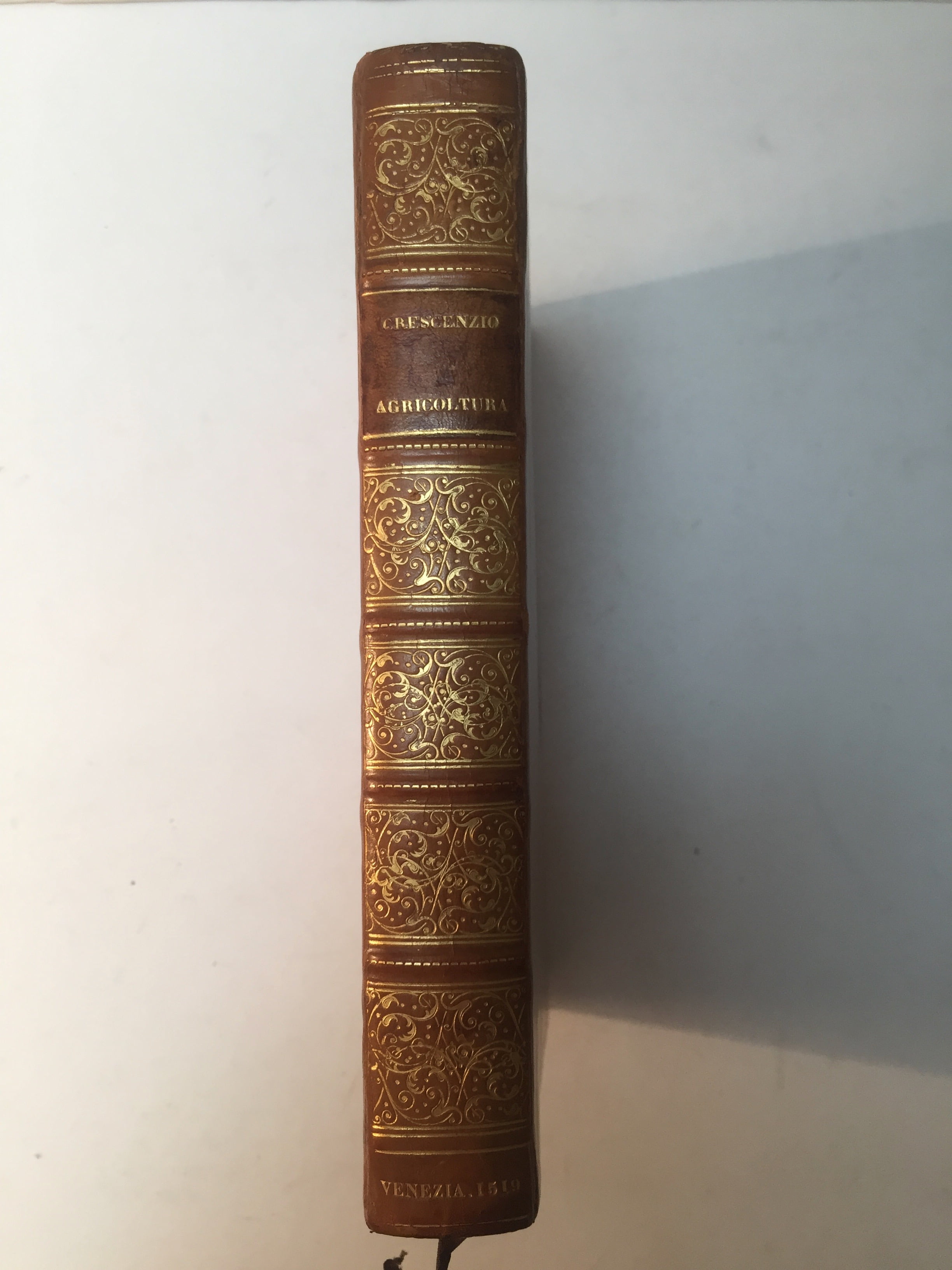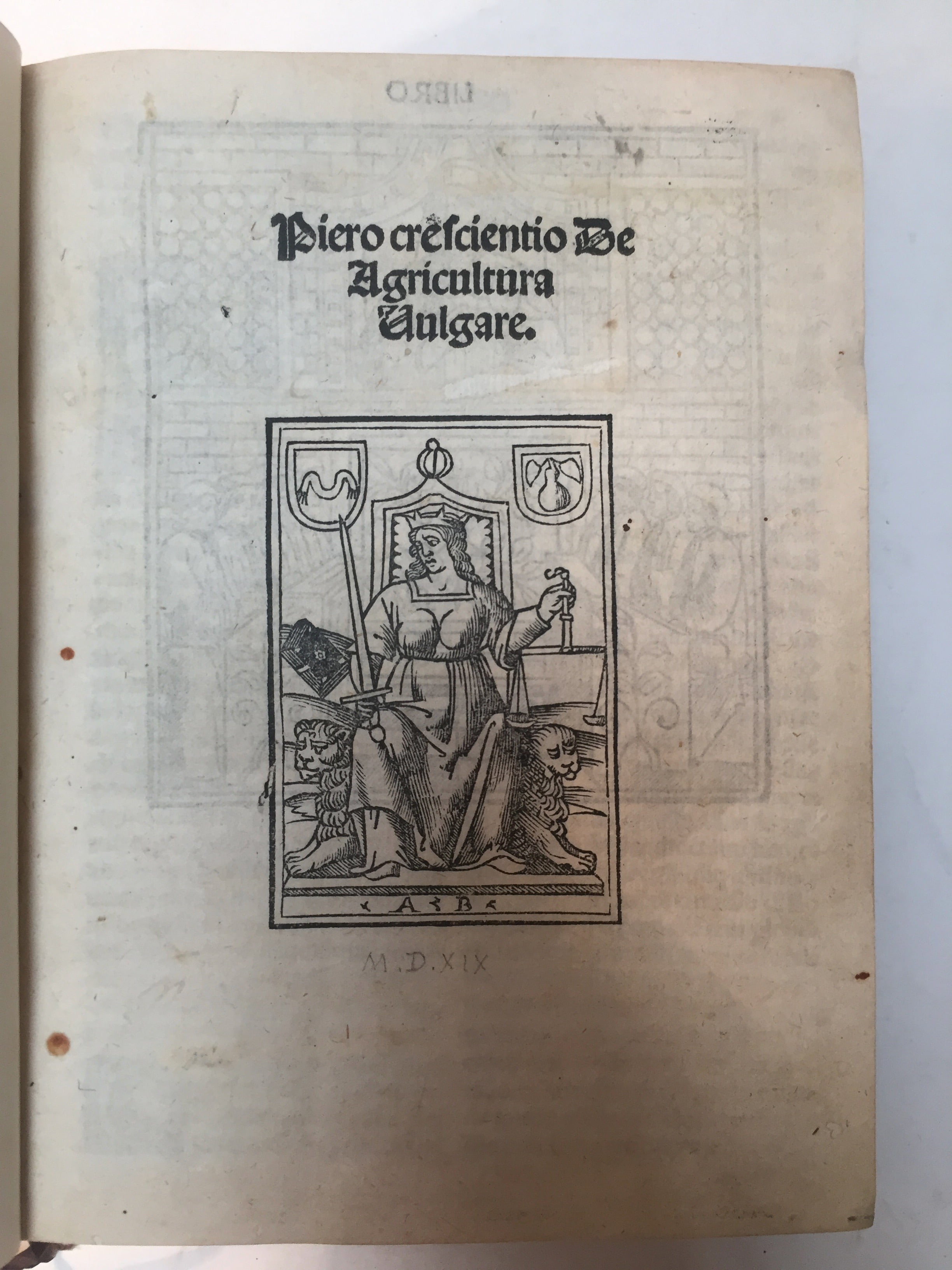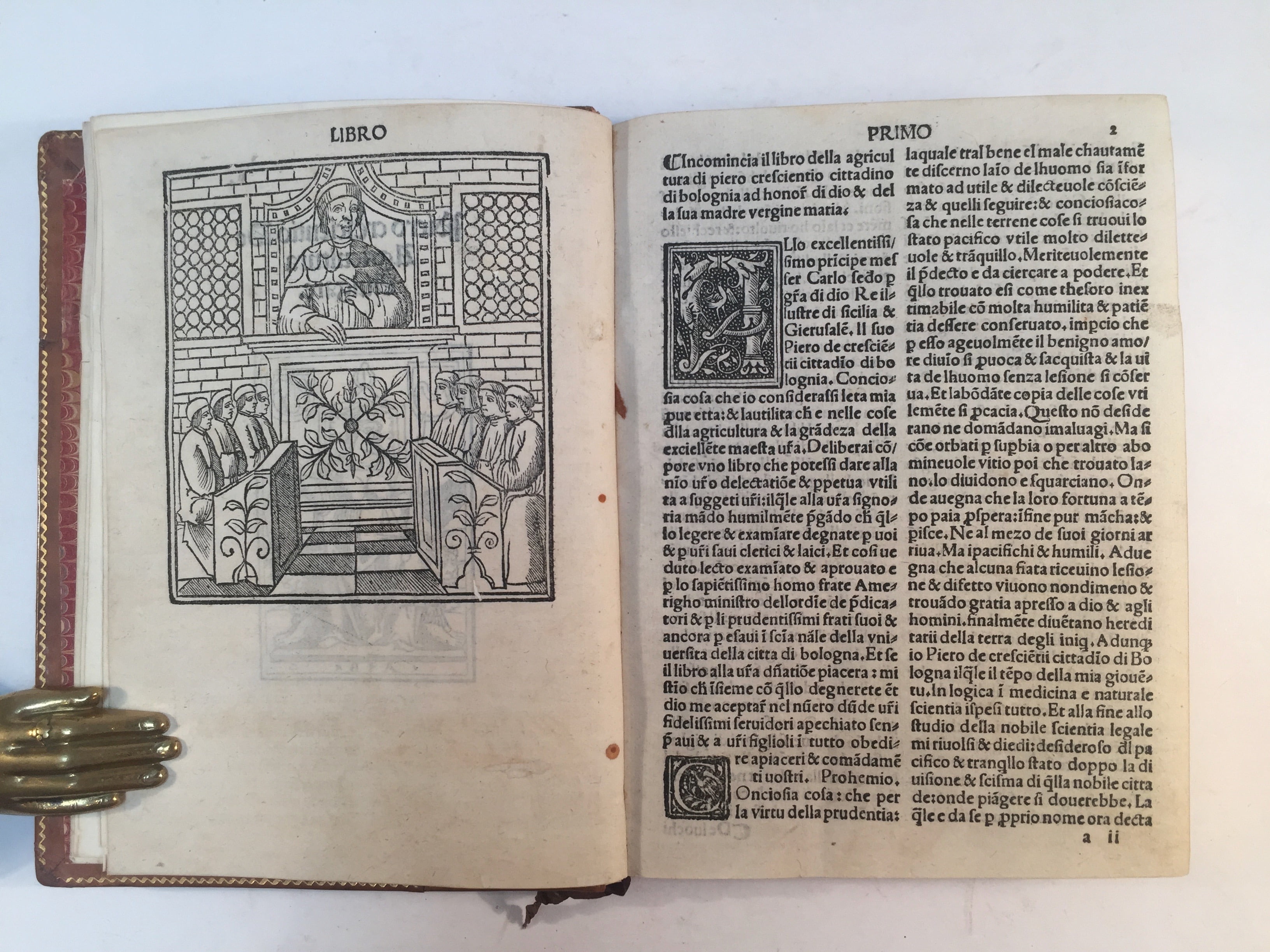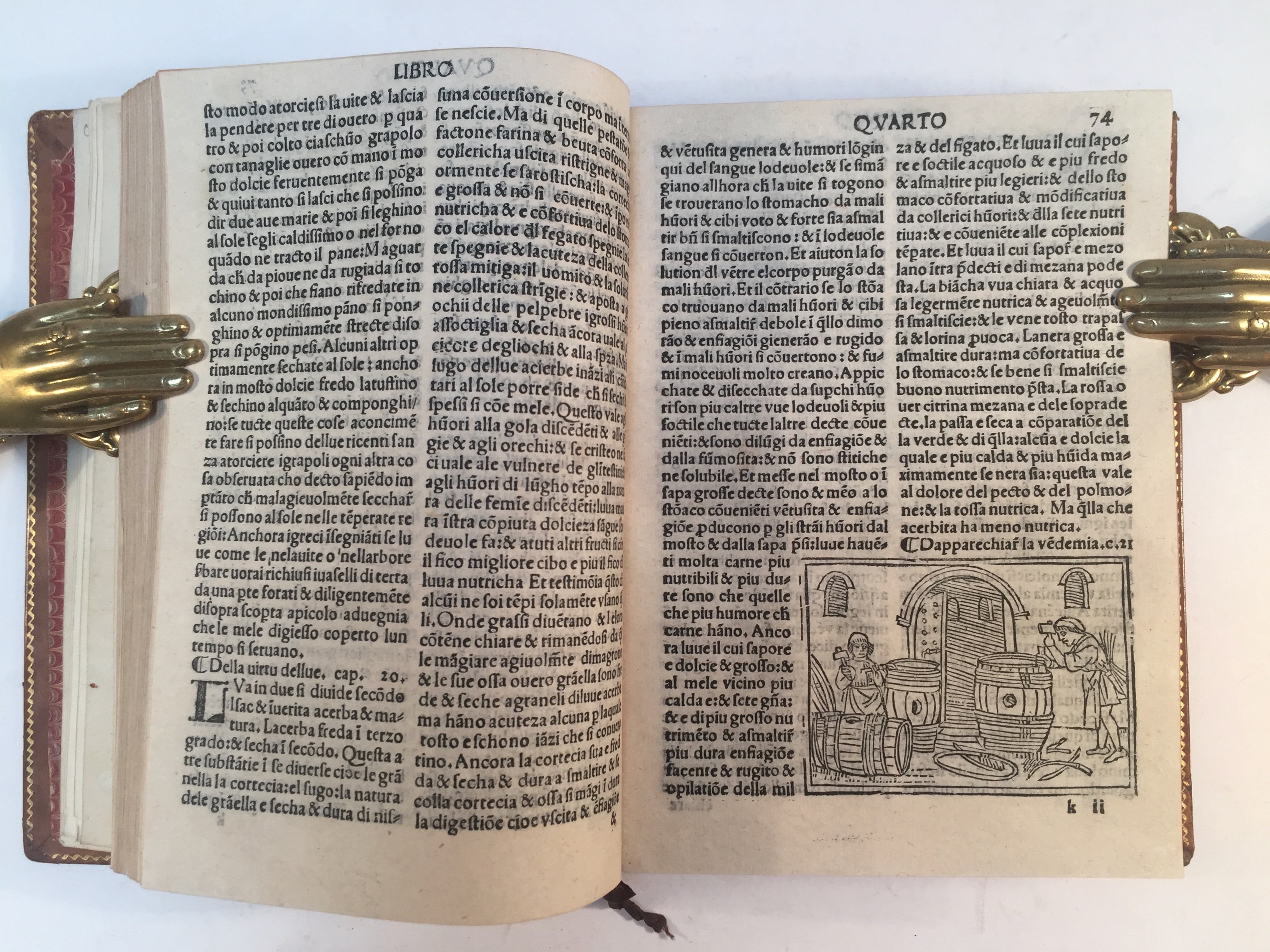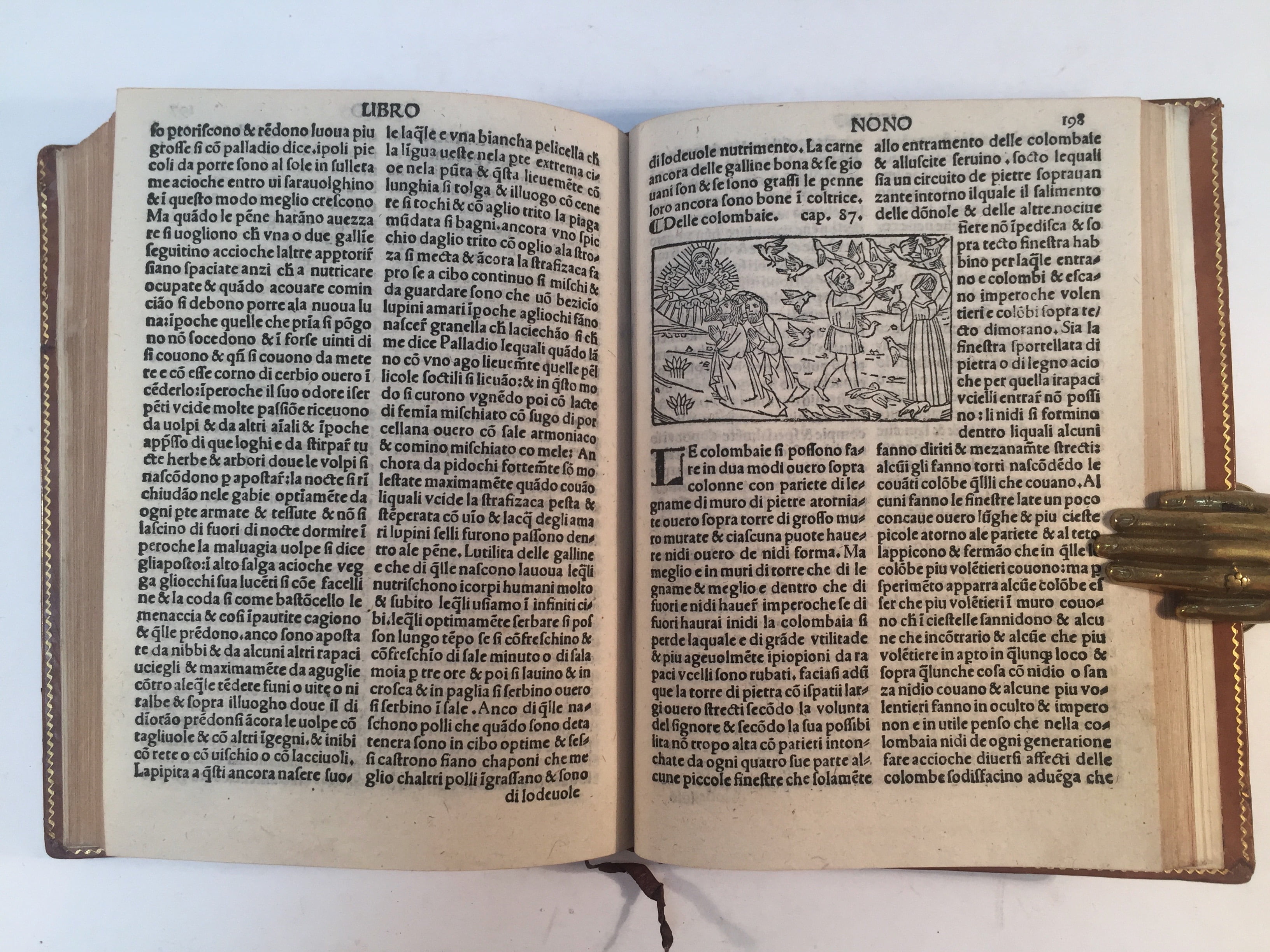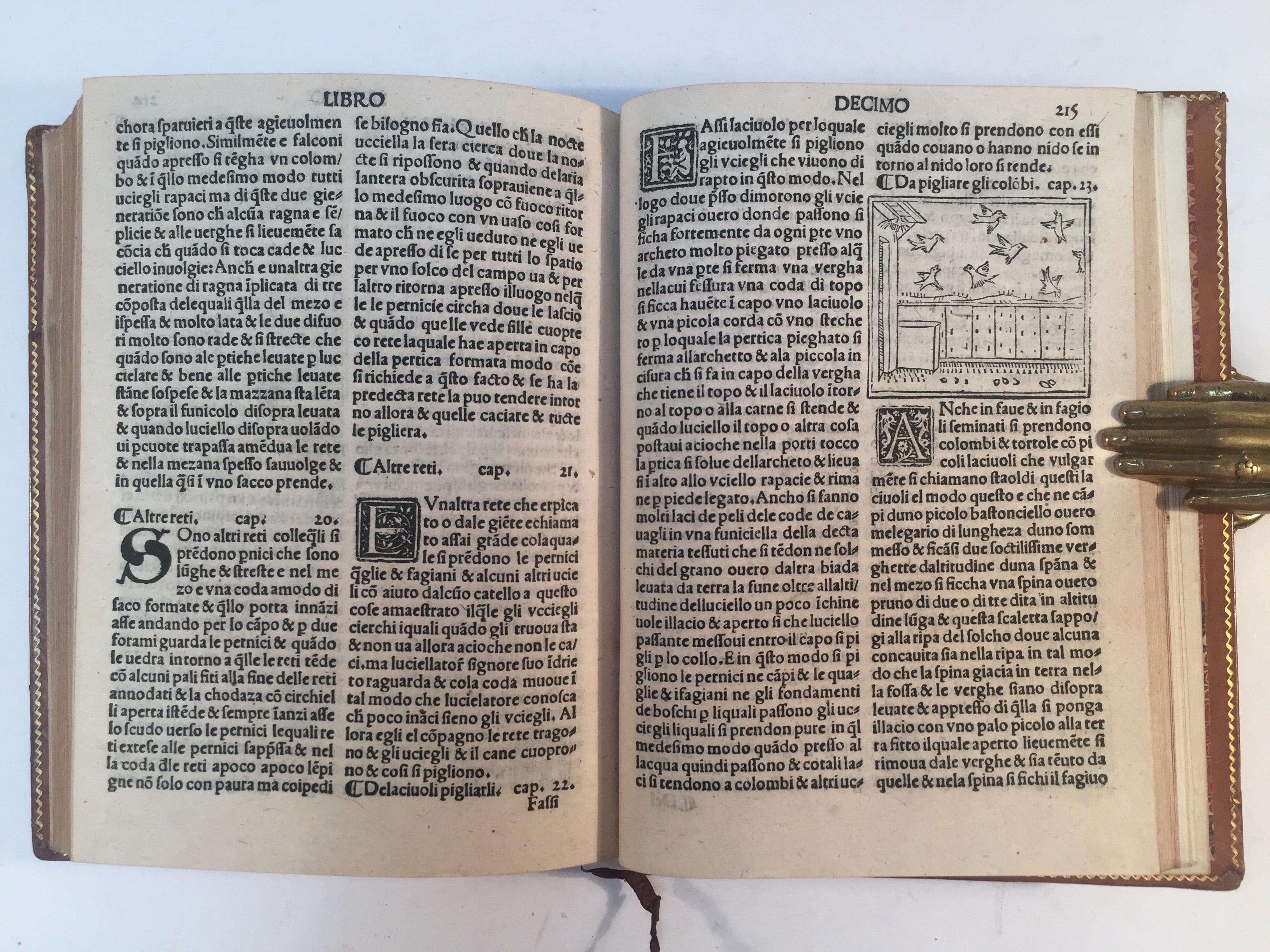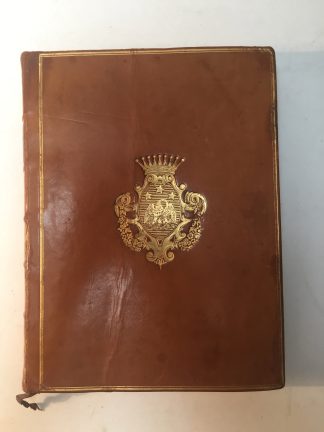CRESCENZI, Pietro de’
BEAUTIFULLY ILLUSTRATED
De agricultura vulgare
Venice, [Alessandro Bindoni], 1519£4,500.00
Small 4to. ff. 235 [234] (vi). Roman letter, large Gothic to t-p, double column. Woodcut of Justice to recto and large woodcut from Alexander Grammaticus’s Doctrinale (1513) to verso of t-p; c.30 small woodcuts in text of rural scenes (some repeated); decorated initials. Lower blank half of last leaf replaced, upper margins slightly trimmed, occasional minor yellowing. A fine copy, on high-quality paper, in C19 polished calf, double gilt ruled border, gilt arms of Victor Spitalieri de Cessole family to covers, silk bookmark, marbled pastedowns, a.e.g. Spine in six double gilt ruled compartments, five with gilt leafy tendrils. Erased autograph (?) on front pastedown, the odd mark in red crayon.
A fine, handsomely illustrated, copy of the Italian translation of Pietro de’ Crescenzi’s famous writings on agriculture, printed in over 50 editions in several languages between 1471 and 1600. Crescenzi (c.1230/30-1320) studied law, medicine and natural science at Bologna. After retiring from a long legal career, he spent much time at his estate in the Bolognese countryside. There he was inspired to write ‘De agricultura vulgare’ (c.1304)— first printed as ‘Ruralia commoda’ in Nuremberg in 1471—a treatise on agriculture based on classical and medieval sources and his direct experience. Like its most important models—Columella’s ‘De re rustica’ and Palladius’s ‘Opus agriculturae’—‘De agricultura’ was fundamental for the humanist re-elaboration of the rustic values of landownership so dear to the ancient Roman elites. The work presents an ideal ‘holistic’ landowner who is knowledgeable about all aspects of estate management, from the architecture of buildings to the caretaking of gardens and meadows, wine-making, bee-keeping, hunting, farming, and the use of trees and plants for medicinal and nutritional purposes. The physical and spiritual well-being of Crescenzi’s country life is identified with the harmony of the human and the natural following Avicenna’s theories of the bodily humours. The superb woodcuts, many of which were drawn from the Venetian edition of 1495, depict a variety of subjects, from techniques for distilling river water and planning gardens to ways of ensuring that oxen ‘cooperate’ whilst pulling the plough—a tongue-in-cheek vignette, this, in which the artist inserted, behind the customary peasant figure, that of Hercules carrying out his tenth labour of bringing back from the end of the world the uncooperative cattle of Geryon.
This copy belonged to the Spitalieri de Cessole family from Nice who amassed a great library. The gilt arms were commissioned by Henry de Cessole in 1850.
Graesse II, 299: USTC 824568; BM STC It., p. 203; Essling, 845; Sander, 2238; Simon 162. Not in Bitting, Vicaire or Oberlé.In stock


